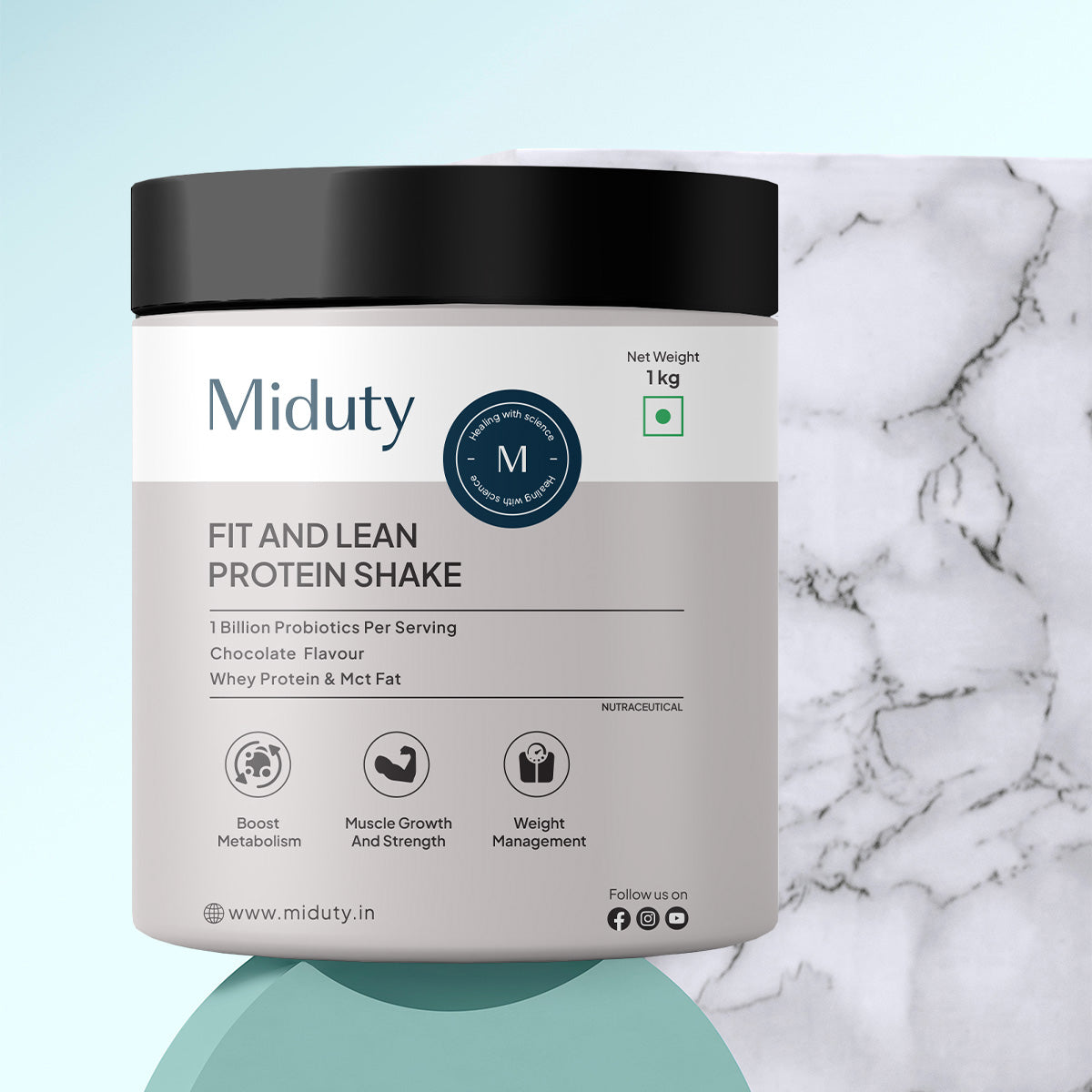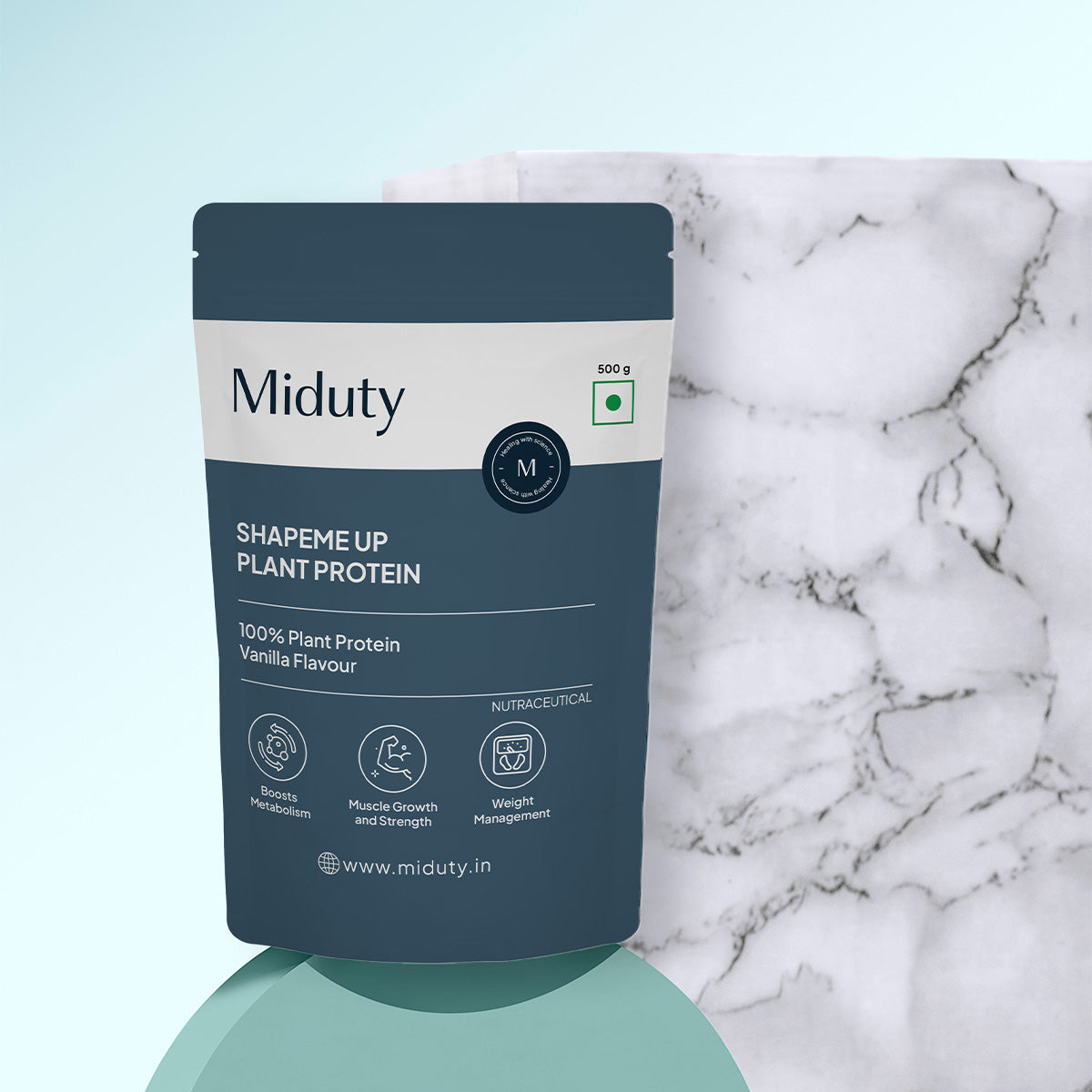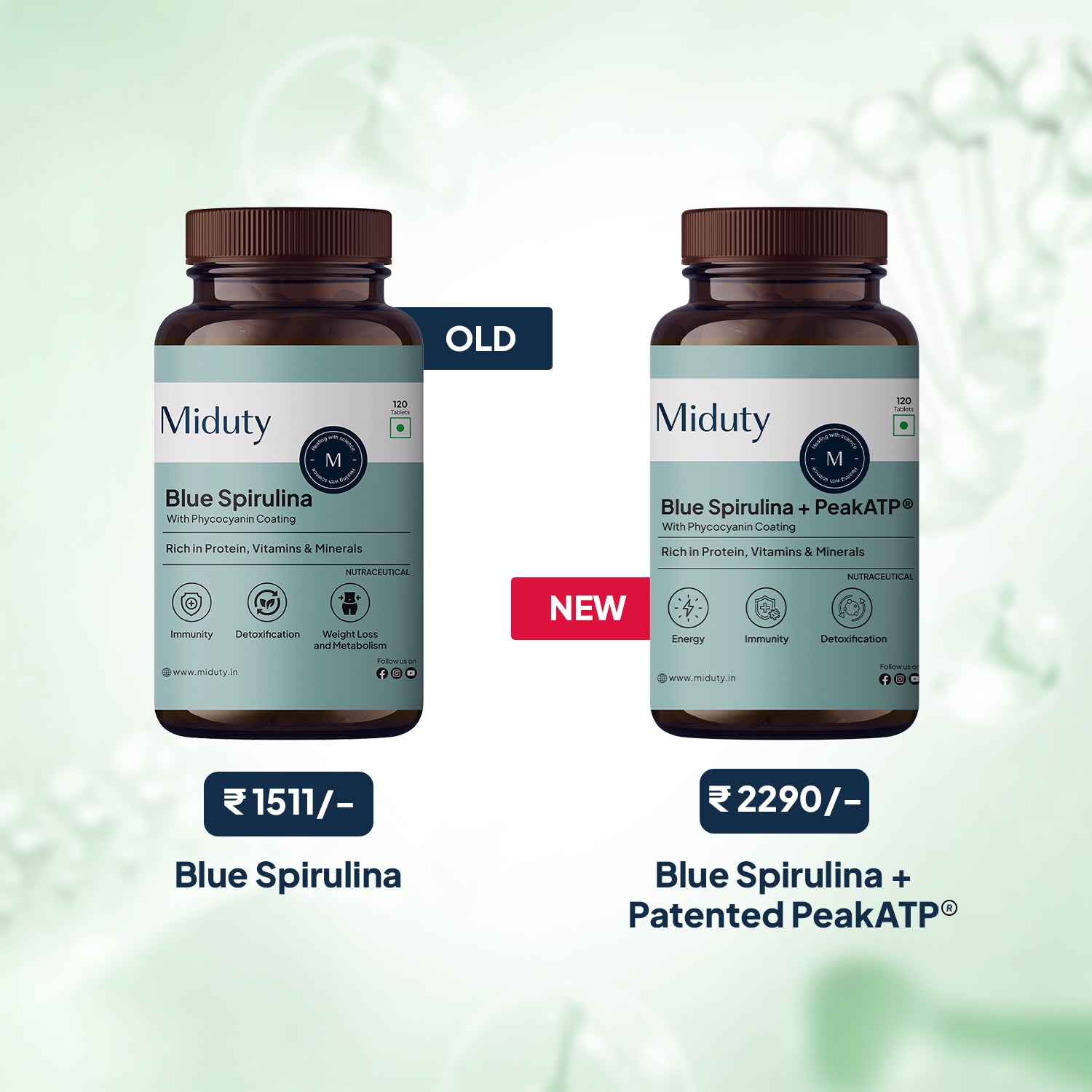
The Hidden Dangers of Low-Quality Protein Powders
Protein powders are among the most widely used supplements today. They're popular with athletes, fitness beginners, busy professionals, and even older adults who struggle to meet daily protein needs. But as the market has exploded, so has the number of cheap, low-quality options—many of which come with hidden risks people rarely talk about.
While a good protein powder can support muscle growth, recovery, and overall health, a poor-quality one can do the opposite, creating issues that affect everything from digestion to long-term safety. In this blog, we'll unpack what makes a protein powder "low quality," why it matters, and how to choose a safe, effective supplement.
Key Takeaways
1. Low-quality protein powders often contain harmful additives, contaminants, and misleading labels, making them risky despite being easily available and inexpensive.
2. Poor manufacturing practices—such as inadequate filtration, protein spiking, and lack of testing—lead to products that offer little real nutritional value and may even cause health problems.
3. Regular consumption of cheap protein powders can expose you to serious hazards, including heavy metals, digestive issues, allergen contamination, and long-term organ stress.
4. High-quality protein powders are defined by transparency, clean ingredients, third-party testing, and effective protein sources, all of which support better muscle growth, digestion, and overall health.
5.Whole food protein sources remain the safest and most reliable option, and when combined with a trusted, well-tested protein powder, they provide a balanced approach to meeting daily protein needs.
What Is a Low-Quality Protein Powder?
A low-quality protein powder is one that contains poor protein sources, unhealthy additives, contaminants, or misleading labels. These products are often cheaper, heavily marketed, and easily available both online and in local stores.
You can think of a protein powder as "low quality" if it meets any of these criteria:
- Uses low-grade protein sources (like cheap soy isolates with fillers instead of whey isolate or high-quality plant blends)
- Contains unnecessary additives such as artificial colors, thickeners, and large amounts of sugar
- Has a long ingredient list filled with chemicals you can barely pronounce
- Is manufactured without proper testing or quality control
- Includes misleading claims like "100% pure protein!" without certifications
- Fails to provide accurate amino acid profiles
Low-quality protein powders often focus on cutting costs rather than protecting your health.
How Low-Quality Proteins Are Made?
Premium protein powders go through carefully regulated extraction, filtration, and testing processes. In contrast, cheap ones may use:
- Aggressive heat processing that destroys amino acids
- Inadequate filtration, leaving behind impurities or lactose
- Low-cost raw materials, sometimes from questionable suppliers
- Artificial flavoring systems used to cover up poor taste and smell
- Bulk fillers to increase volume without adding nutrition
Because regulations in the supplement industry can be lax in some regions, companies can cut corners without consumers ever knowing.
Health Dangers of Low-Quality Protein Powders
Low-quality protein powders may seem harmless at first glance, but the dangers they carry can affect your health in both the short and long term. Here are the key problems explained in clear, easy-to-understand sentences.
1. Harmful Additives and Artificial Ingredients
Many low-quality protein powders contain artificial sweeteners, synthetic colors, artificial flavors, thickeners, and preservatives that the body doesn't handle well. Over time, these additives can contribute to digestive discomfort, headaches, inflammation, and even changes in the gut microbiome. While they help improve taste or texture, they provide no nutritional benefit and can lead to long-term health concerns when consumed regularly. [1]
2. Heavy Metal Contamination
Independent testing has shown that several cheap protein powders contain dangerous levels of heavy metals such as lead, arsenic, mercury, and cadmium. These toxins find their way into powders due to contaminated soil, poorly sourced raw materials, or lack of quality control in manufacturing. Regular exposure to these metals can harm the kidneys, disrupt hormones, weaken the immune system, and contribute to neurological issues, making contaminated protein powders a serious health risk. [2]
3. Protein Spiking (Amino Spiking)
Protein spiking is a deceptive practice where companies add cheap amino acids like glycine or taurine to artificially inflate the protein content on the label. This means you are paying for protein you are not truly getting, and your body does not receive the full amino acid profile needed for muscle growth and recovery. As a result, progress becomes slower, workouts feel less effective, and you may end up consuming more powder than necessary without seeing the expected benefits. [3]
4. Digestive Problems and Gut Issues
Many low-quality protein powders cause bloating, gas, diarrhea, constipation, or stomach cramps because they are made with poor-quality ingredients that are difficult for the body to digest. Some powders contain low-grade lactose, undisclosed allergens, artificial sweeteners, or gums that irritate the digestive tract. If you frequently feel uncomfortable after drinking a protein shake, the issue often stems from the powder itself, not your digestive system.
5. Inaccurate Labeling and Misleading Claims
Some brands use misleading labels that exaggerate protein purity or hide important details under vague terms like "proprietary blend." These labels may disguise added sugars, inferior protein sources, or unnecessary filler ingredients. When a product does not clearly list its amino acid profile, sourcing, or allergen information, it becomes nearly impossible for consumers to know what they are truly consuming, which raises major safety concerns.
6. Risk of Allergens and Cross-Contamination
Low-quality protein powders are often manufactured in facilities that produce multiple types of supplements on the same equipment, increasing the risk of contamination with allergens such as gluten, soy, dairy, nuts, or even shellfish. For individuals with allergies or sensitivities, this cross-contamination can trigger serious reactions. High-quality brands typically test for allergens and follow strict manufacturing standards, but many cheaper brands do not.
7. Low Biological Value and Ineffective Protein Sources
Not all protein sources offer the same nutritional value. Low-quality powders may be made from cheap proteins that have a low biological value, meaning the body cannot fully absorb or use them for muscle repair and recovery. This leads to slower muscle growth, reduced workout performance, and inefficient nutrient use. Better options like whey isolate, egg white, or balanced plant protein blends provide more complete amino acid profiles and are far more effective.
8. Long-Term Health Concerns
Over time, consuming low-quality protein powders can lead to chronic inflammation, nutrient imbalances, digestive issues, and stress on the liver and kidneys. Poor-quality ingredients add to your body's toxic load and may contribute to hormonal disruptions or weakened immunity. While using these powders may not cause immediate symptoms, the cumulative impact over months or years can significantly affect overall health.
Why Do People Buy Low-Quality Protein Powders?
Many people still choose low-quality protein powders because they seem more affordable, especially for beginners who may not understand the difference quality makes. Strong marketing tactics, such as bold claims, attractive packaging, and influencer promotions, also convince consumers that these products are effective even when the ingredients are substandard. The problem is made worse by the supplement industry's loose regulations, which allow companies to sell products without strict testing or proof of purity. As a result, brands can exaggerate benefits or hide weak formulas behind misleading labels. On top of this, many people assume all protein powders are the same, not realizing that quality, sourcing, and safety can vary significantly from one product to another.
How to Identify a Low-Quality Protein Powder?
A low-quality protein powder is usually easy to spot once you know what to look for. Start by checking the ingredient list. If you see long chemical names, artificial colors, or a lot of added sugars, that is a red flag. Good protein powders should have only a few simple ingredients. Also look for products that hide behind "proprietary blends," because this often means the company is not being honest about how much protein you are actually getting. Finally, pay attention to taste and texture. If it is overly sweet, gritty, or hurts your stomach, it may be low quality.
How to Identify a High-Quality Protein Powder?
A high-quality protein powder becomes easy to identify once you know what to look for. It typically has a short and clean ingredient list, third-party testing certifications, and a clear amino acid profile that shows the protein is both complete and effective. Quality powders avoid artificial colors, unnecessary fillers, and excessive sweeteners, making them gentler on the digestive system. Good brands are transparent about where their ingredients come from and how the product is processed. Many premium formulas also combine high-quality whey protein with beneficial additions like MCT fat powder, which can support sustained energy, better absorption, and improved overall performance.
Safer Alternatives to Low-Quality Protein Powder
If you want to increase your protein intake without relying on questionable supplements, whole foods are an excellent place to start. They not only provide high-quality protein but also offer essential nutrients that support overall health. Here are some reliable options:
- Greek yogurt: Rich in protein and probiotics that support gut health.
- Cottage cheese: A slow-digesting protein source that keeps you full longer.
- Eggs: One of the most complete and bioavailable sources of protein.
- Lean meats like chicken, turkey, and fish: Packed with protein, B vitamins, and important minerals.
- Plant-based choices like tofu, tempeh, lentils, beans, and chickpeas: Great for those who prefer vegetarian or vegan options, offering protein along with fiber and antioxidants.
- Nuts and seeds: Provide healthy fats, protein, and micronutrients that contribute to balanced nutrition.
Combining these whole foods with a high-quality protein powder creates a well-rounded approach to meeting your daily protein needs. This ensures you get both natural nutrients and convenient supplementation without the risks associated with low-quality powders.
Final Thoughts
Protein powders can be incredibly beneficial, but quality matters more than most people realize. Low-quality options may seem appealing due to their lower cost, but hidden dangers, from digestive issues to heavy metal contamination, make them a risky choice. By choosing brands that prioritize purity, transparency, and safety, you support your health instead of harming it. Your body deserves better than cheap fillers and hidden toxins, especially when it is something you consume daily.
High-quality protein powders also deliver better results. Premium formulas offer more bioavailable protein sources, leading to improved muscle recovery, enhanced energy, and more consistent progress. In contrast, low-grade powders often rely on artificial additives or inferior protein sources that provide little benefit and may even slow your goals. Ultimately, investing in a reputable protein powder is an investment in long-term wellness, giving you peace of mind and reinforcing your commitment to a healthier lifestyle.
FAQ's on Low-Quality Protein Powders -
Q1 - How to tell if protein powder is bad quality?
You can tell a protein powder has gone bad by noticing a sour or rancid smell, a bitter or unusual taste, or changes in color or texture. Clumping can also be a sign that moisture has gotten in and the powder is no longer safe. If you see any mold or insects, throw it out right away. When in doubt, it is always safer to discard the product to avoid any potential health risks.
Q2 - How to spot fake protein powder?
To spot fake protein powder, start by inspecting the packaging. Look for proper seals, correct spelling, and authenticity features such as QR codes. You can also do simple tests at home. Real protein powder usually mixes smoothly with little foam, while fake versions may stay lumpy, feel gritty, or have an unusual smell or taste. To stay safe, always buy from trusted sellers and, if possible, confirm the product through the manufacturer's website or customer support.
Q3 - What is the cleanest protein powder?
The cleanest protein powder depends on personal preference, but it's usually one with very few ingredients and no artificial sweeteners, colors, or fillers. Options like unflavored single-ingredient whey or plant-based powders, such as Naked Whey or The Whole Truth, are often considered clean. Brands like Ora Organic also offer simple, organic, third-party tested formulas. When choosing, look for a short ingredient list, trusted certifications, and a protein source that suits your dietary needs.
Q4 - Are there unhealthy protein powders?
Yes, some protein powders can be unhealthy because they may contain contaminants such as heavy metals, artificial sweeteners, and other unnecessary additives. Plant-based powders can absorb more heavy metals from the soil, and both plant and dairy-based options have been found to contain lead, arsenic, cadmium, and mercury. In some cases, these levels can exceed safe limits, especially when the powder is consumed in large amounts.
Q5 - How to check purity of protein?
You can check protein purity with lab methods like SDS-PAGE to separate proteins by size, HPLC for precise ingredient breakdown, and mass spectrometry for detailed molecular information. For a simple at-home check, mix the powder with boiling water. Pure protein usually clumps and hardens, while powders with lots of fillers tend to dissolve more easily.
References











